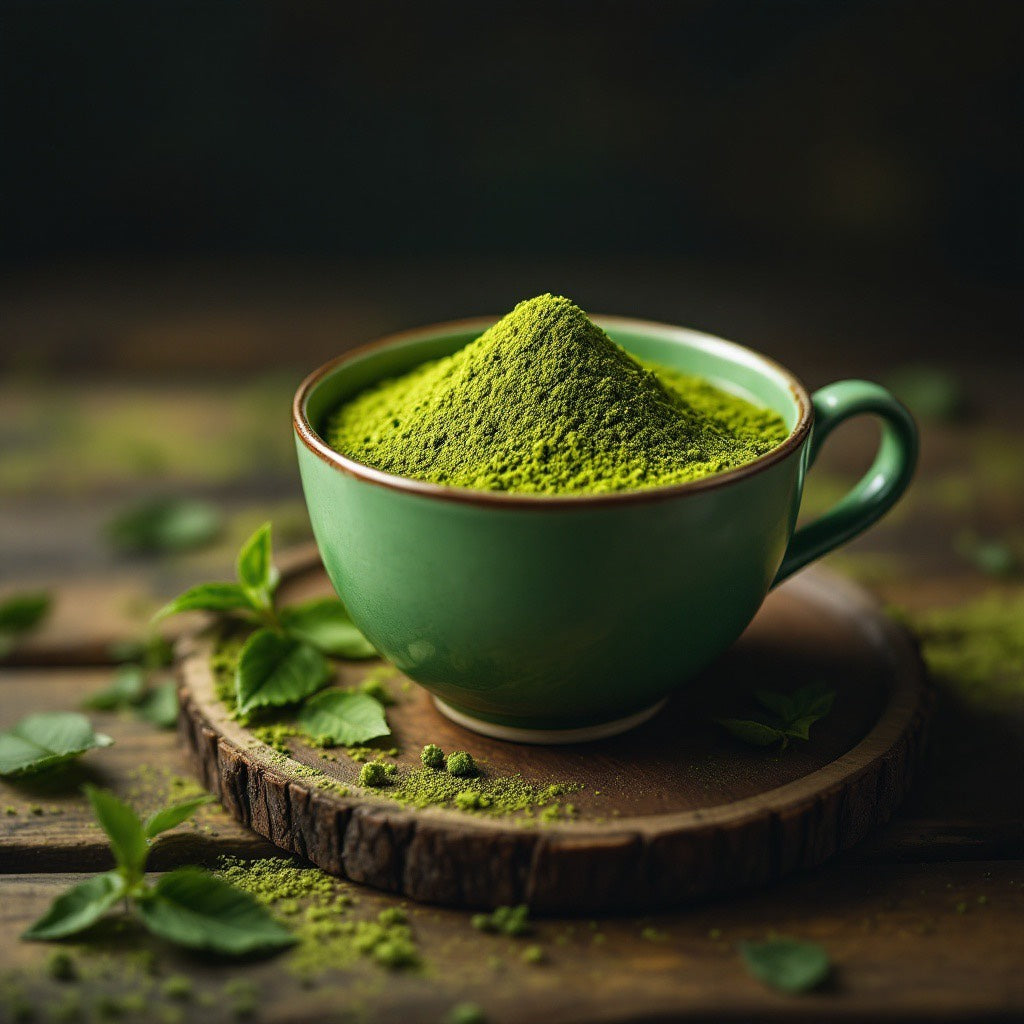The History of Matcha: Who First Microground Green Tea?
Matcha is more than just a trendy superfood; it has a rich history spanning over a thousand years. This finely ground green tea, known for its vibrant color, creamy texture, and deep umami flavor, has its roots in ancient China before becoming the heart of Japanese tea culture. But who first had the idea to microgrind tea leaves into a fine powder? Let’s take a journey back in time to uncover the origins of matcha.
From Ancient China to Japan: The Birth of Ground Tea
The story of matcha begins in China during the Tang Dynasty (618–907 AD). At that time, tea was commonly pressed into bricks for easier transport and trade. To prepare tea, people would roast and grind the tea bricks into powder before whisking them with hot water. This method laid the foundation for what would later evolve into matcha.
During the Song Dynasty (960–1279 AD), tea culture in China flourished, and powdered tea became a refined practice among Buddhist monks and scholars. They developed a more sophisticated method of grinding tea leaves into a fine powder and whisking it with water using a bamboo whisk, much like modern matcha preparation. This ceremonial approach to tea drinking was admired for its meditative qualities, aligning well with Zen Buddhism.
Eisai and the Introduction of Matcha to Japan
In the late 12th century, a Japanese Buddhist monk named Eisai traveled to China to study Zen Buddhism. While there, he encountered powdered tea and saw its potential not only as a beverage but also as a tool for meditation and focus. Recognizing its benefits, he brought tea seeds and the powdered tea-making technique back to Japan.
Eisai planted the first tea bushes in Japan, particularly in the Uji region, which is now famous for producing high-quality matcha. He also wrote the book Kissa Yōjōki ("Drinking Tea for Health"), where he praised green tea’s medicinal benefits, further popularizing the practice in Japan.
The Evolution of Matcha Grinding
While China eventually moved away from powdered tea in favor of steeped loose-leaf tea, Japan refined and perfected the art of grinding tea leaves into a fine powder. By the 14th and 15th centuries, matcha had become central to the Japanese tea ceremony, particularly under the influence of tea master Sen no Rikyū in the 16th century. He emphasized simplicity, mindfulness, and the appreciation of imperfection in tea preparation.
The traditional method of microgrinding matcha remains largely unchanged today. Tea leaves, known as tencha, are carefully shaded before harvest to enhance their flavor and amino acid content. After harvesting, the leaves are steamed, dried, and then stone-ground using granite mills to achieve the ultra-fine powder known as matcha. This slow, meticulous grinding process helps preserve the delicate flavor, vibrant green color, and nutritional properties of the tea.
Matcha Today: A Global Phenomenon
While matcha has been a staple in Japan for centuries, its popularity has skyrocketed worldwide in recent years. Modern innovations, like industrial grinding methods, have made matcha more widely available, but traditional stone grinding is still considered the gold standard for high-quality matcha.
Today, matcha is not only enjoyed in traditional tea ceremonies but also found in lattes, smoothies, desserts, and even savory dishes. Its rich history and deep cultural significance make it more than just a drink—it’s an experience, a ritual, and a testament to the centuries of craftsmanship behind each sip.
Final Thoughts
The journey of matcha—from ancient Chinese monks to modern wellness enthusiasts—shows how a simple yet profound practice can endure the test of time. The art of microgrinding green tea leaves into matcha powder was first developed in China but perfected and preserved by the Japanese, particularly in the Uji region. Next time you sip a bowl of matcha, take a moment to appreciate the centuries of tradition that brought this vibrant green tea to your cup.

